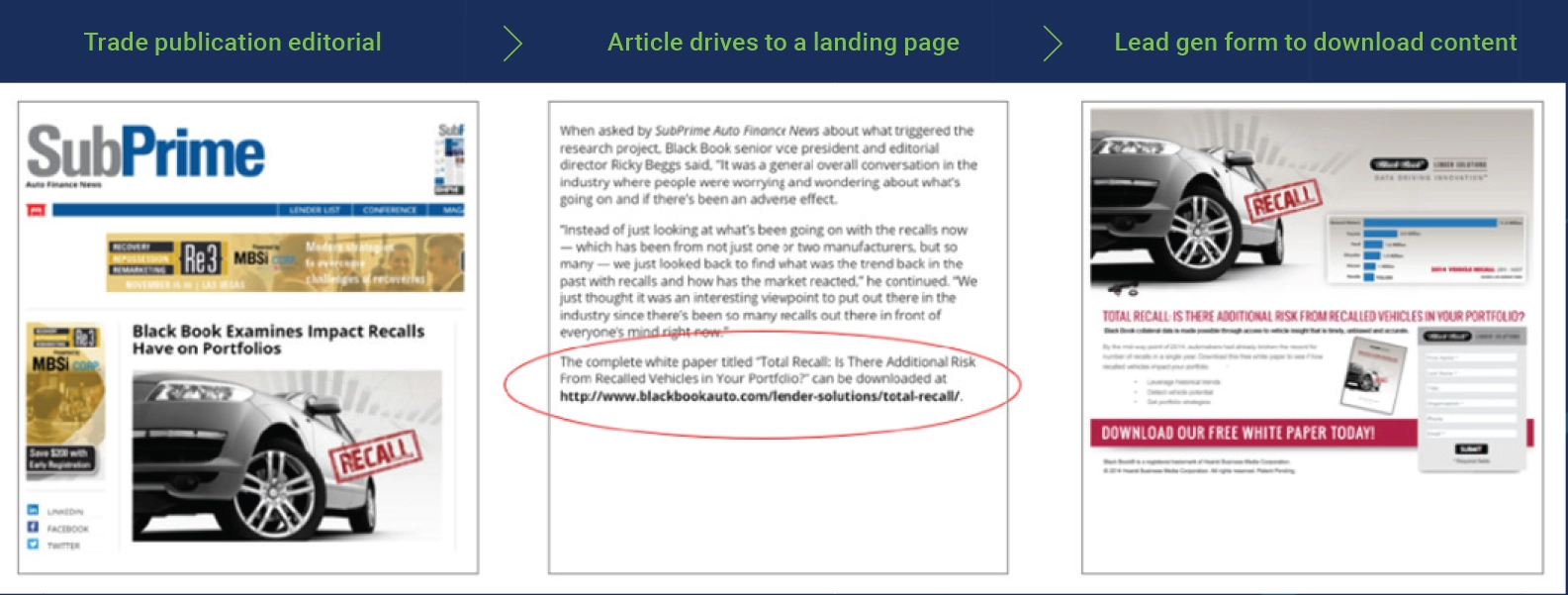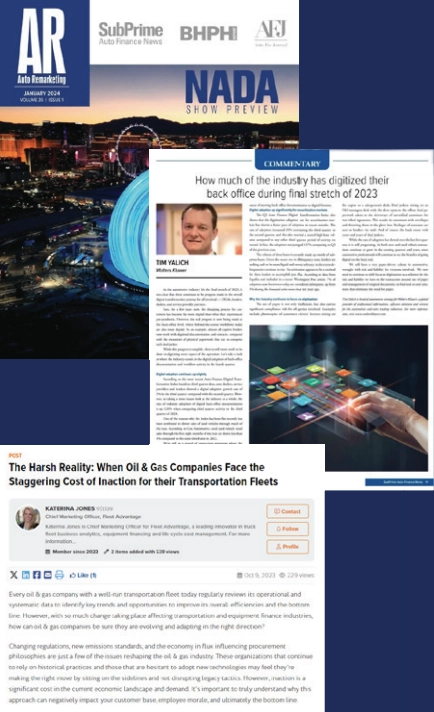The Thoughtful Brand: Harnessing the Power of Thought Leadership in Shaping Brand Perceptions

Posted on: March 1st, 2024
In today’s competitive and dynamic business landscape, brands need thought leadership to establish category positioning, fostering trust and credibility among their target audience. Thought leadership not only enhances brand visibility but also positions companies as innovators, driving customer loyalty, increasing shareholder value, and attracting top talent.
Thought leadership is a highly sought after strategy and part of the B2B marketing toolkit. But are companies and their leaders truly maximizing its power today? If not, what are the reasons they are coming up short?
Most executives today believe in the power of thought leadership, yet many are not maximizing its full potential. This is detrimental to a brand’s overall strategy as being perceived as a category leader. In fact, executives are constantly on the lookout for insight that can support their decision-making, and our research shows that thought leadership is often one of the key strategies they use. However, the research also shows that many companies are either not leveraging it enough, or they are struggling to achieve thought leadership in an age where internal resources have been stretched like never before.
As strategic partners helping to build thought leadership campaigns for brands, Merit Mile conducted an executive industry survey to take the pulse on the challenges brands have with their thought leadership. In the survey and following report, topics covered include:
- Primary challenges brands face with thought leadership campaigns
- Reasons why brands struggle with thought leadership
- Types of thought leadership content most often used
- Strategies to expect in 2024
Methodology: Hundreds of organic responses were gathered from a range of communications professionals, ensuring a comprehensive understanding of the way thought leadership is executed today. Responses from the online survey were collected from January 25 through February 5, 2024.
The value of thought leadership
The fact that senior executives value thought leadership is very powerful, but it is not equal among every executive, nor brand organization. For most, it means they value thought leadership content, and more importantly, validates the reason why brands should invest in thought leadership initiatives within their broader marketing playbook. So good thought leadership not only helps executives to make decisions that boost their company’s performance – it can also lead to new conversations and relationships.
A brand that invests in thought leadership and does it well will earn trust from its customers and prospects, an extremely valuable commodity. It makes it easier for companies to engage with customers and prospects, spark new conversations, and ultimately generate new sales opportunities.
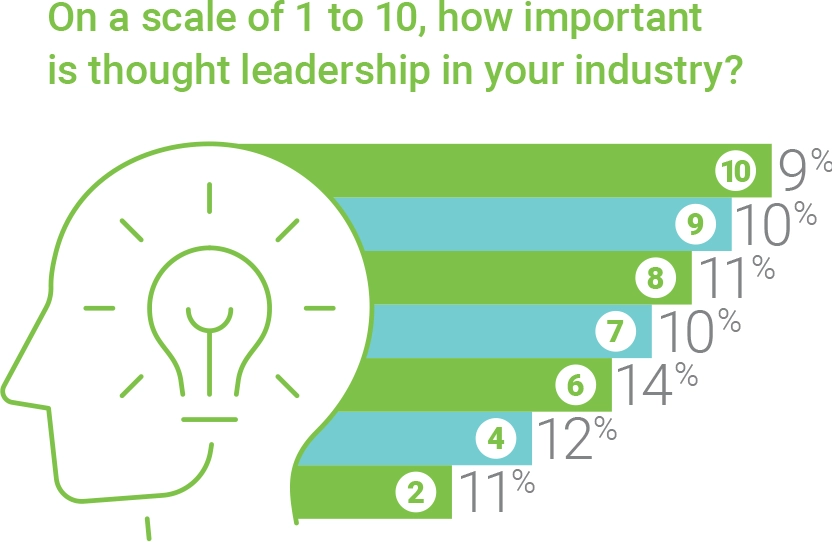
The current state of thought leadership for today’s brands
For many brands, thought leadership is a multifaceted concept that extends beyond individual expertise. The digital age has provided unprecedented opportunities for brands to position themselves as industry leaders by leveraging various platforms and creating valuable, engaging content. As the landscape continues to evolve, the brands that successfully adapt to these changes and prioritize authenticity, transparency, and community engagement are likely to emerge as the thought leaders of tomorrow.
With this in mind, our research suggests that while brands place value in thought leadership as a strategy, many are doing so through the development of content and relationship building with any number of intended audiences, such as customers, investors, media, analysts, etc. And while a quarter of respondents say they are doing some thought leadership by publishing an article here or there, more alarming is the fact that nearly 30% of respondents say they have no thought leadership presence at all. Most executives say lack of budget is a primary issue for this, but a quarter also point to time constraints.
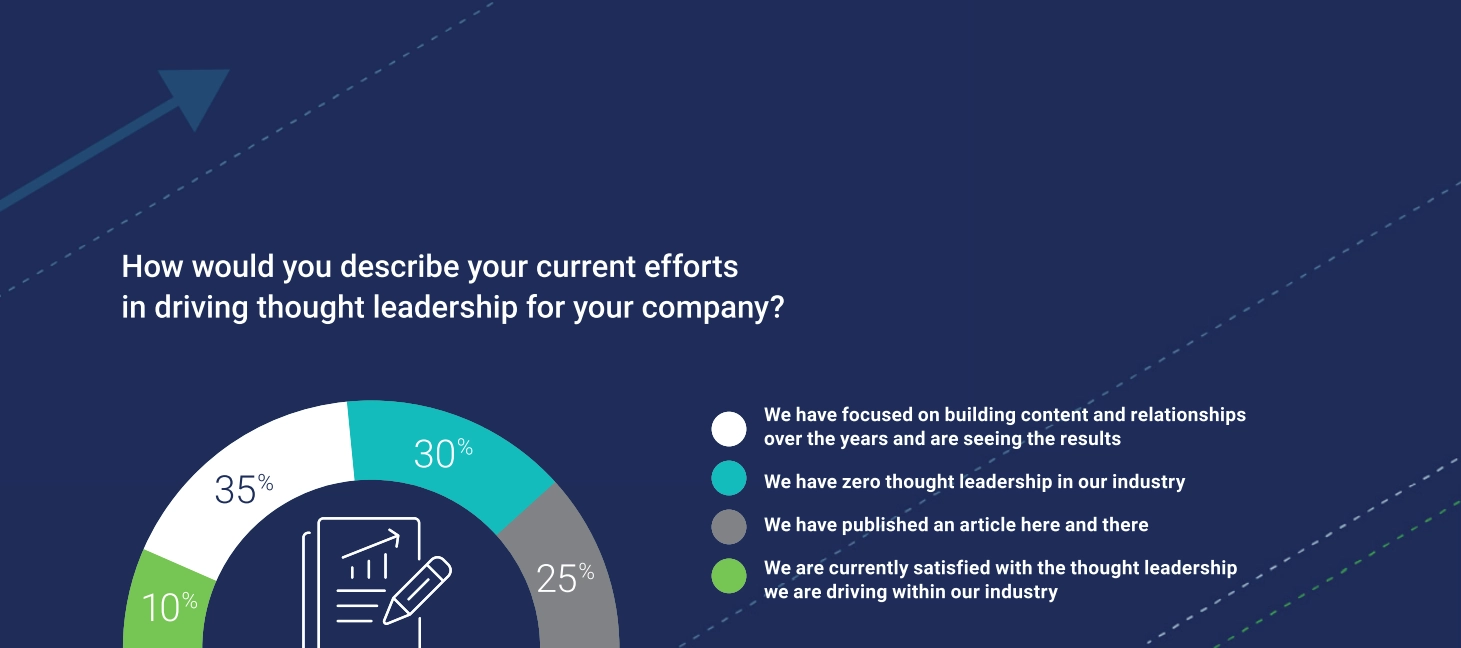
What’s Preventing Brands from Achieving Thought Leadership?
How would you describe your current efforts in driving thought leadership for your company?
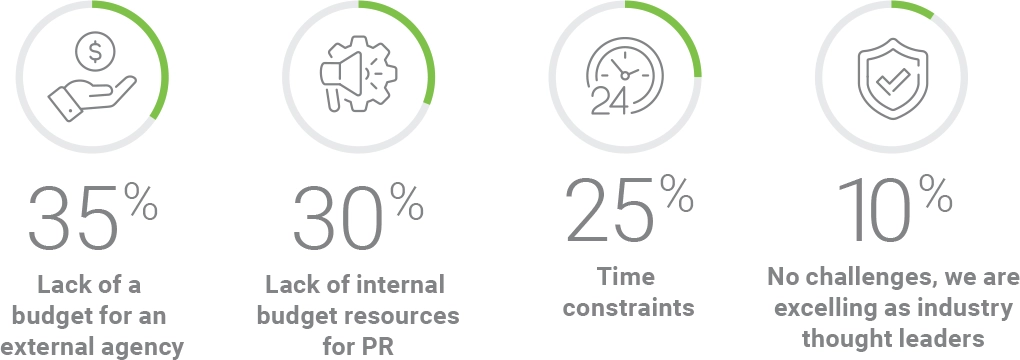
Have you faced any specific obstacles or barriers in your journey toward thought leadership?

Today, leading brands are capitalizing on the shift toward their collective wisdom. Organizations recognize that becoming a thought leader is not just about showcasing individual brilliance but fostering a culture of innovation, expertise, and forward-thinking within the entire company. For brands struggling to do more thought leadership, most point toward frustrations they have connecting content with external audiences. This is understandable since so many brands and leaders build marketing content with promotional or sales strategies in mind, but many fail to understand that thought leadership is about educating, not selling.
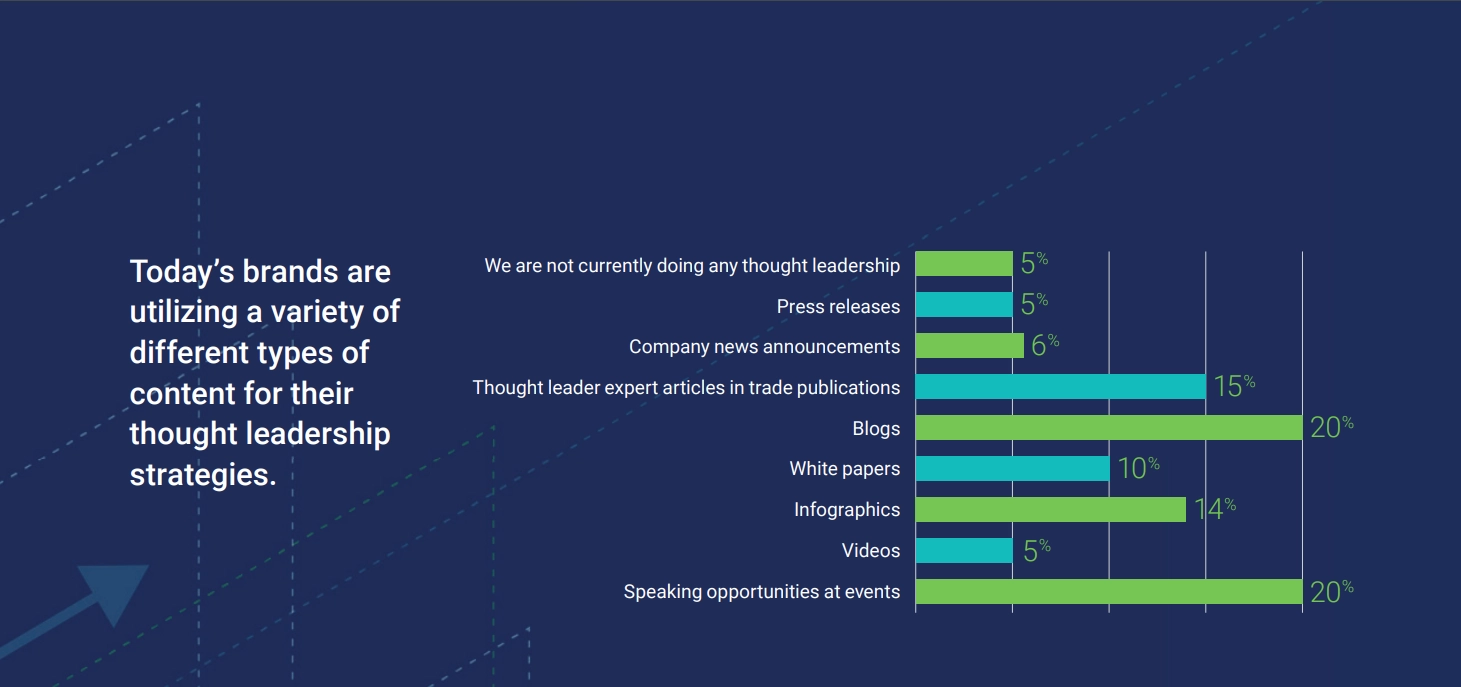
Dedication to Thought Leadership
According to our research, brands want thought leadership success but many aren’t committed to investing the proper time in their strategies. Brands that indicate they are having better success invest 3X the amount of time in their thought leadership than those saying they are not having success. The majority of respondents (35%) say they spend less than an hour developing thought leadership strategies and implementations in a typical week, far less than those seeing quality results. It’s no surprise that the majority of respondents (34.7%) also indicate they are frustrated that they can’t gain ground on competitors in the press. Thought leadership involves an investment in time, even if an agency is hired. Executives must invest time to work with agency partners to cultivate/share ideas, review content, and make time to prepare and handle press interviews and/or analyst briefings
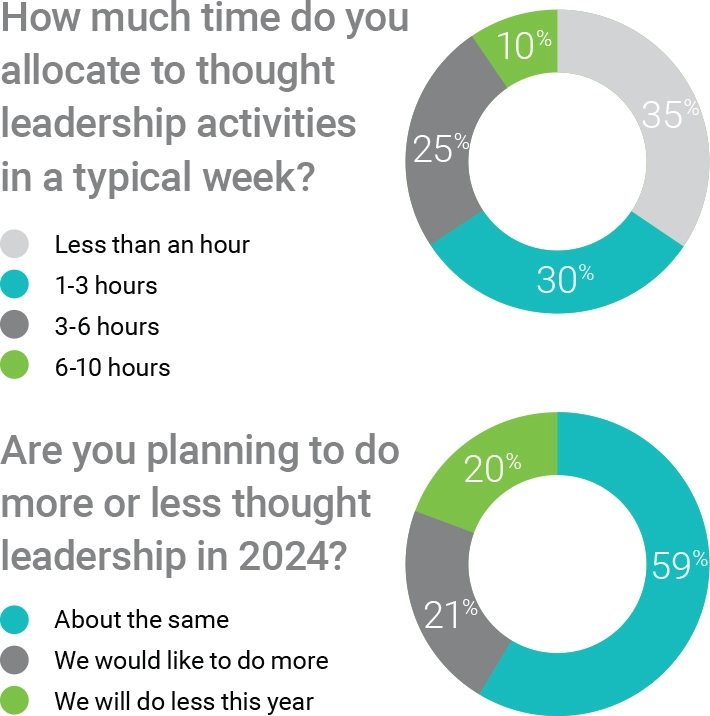
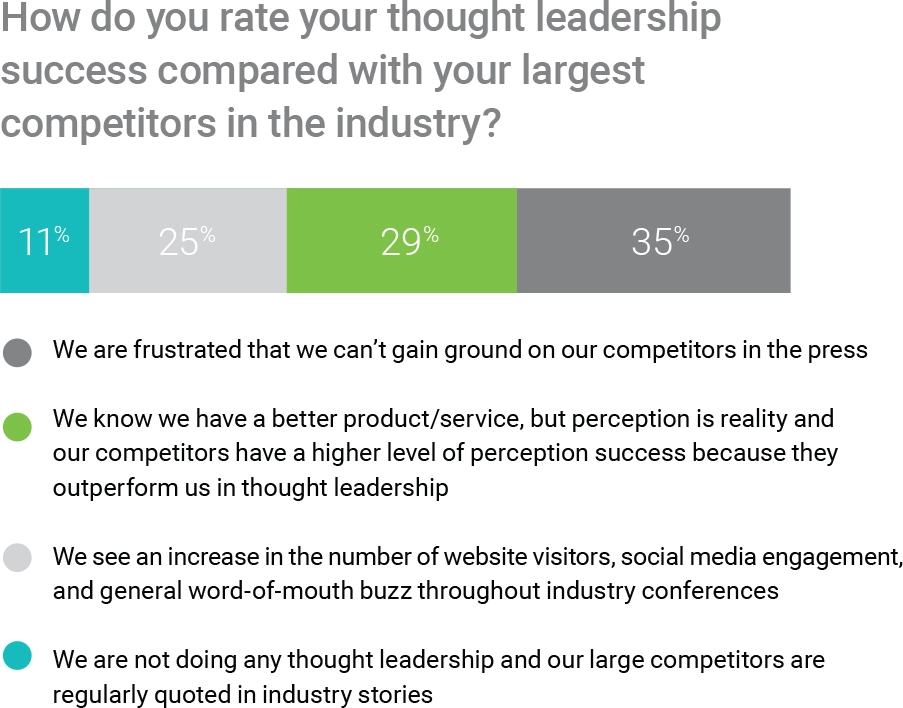
Measurement is Always Critical
Brands are adopting sophisticated metrics to assess the impact of their thought leadership initiatives. Beyond traditional key performance indicators (KPIs), such as website traffic and social media engagement, brands are now exploring sentiment analysis, brand sentiment, and even tracking how thought leadership contributes to lead generation and conversion rates. However, in order to have success, brands must be executing it correctly to find the right results. Similarly as what we’ve seen in the correlation between time investment and results, it is no surprise that the majority (35.6%) aren’t doing enough thought leadership to see any impact yet. Interestingly enough, those brands that are doing more thought leadership (29.7%) are actually seeing quality results.
Are there specific metrics or key performance indicators (KPIs) that you find most valuable in assessing thought leadership impact?

Have you been able to quantify the value your thought leadership efforts have had on your brand?
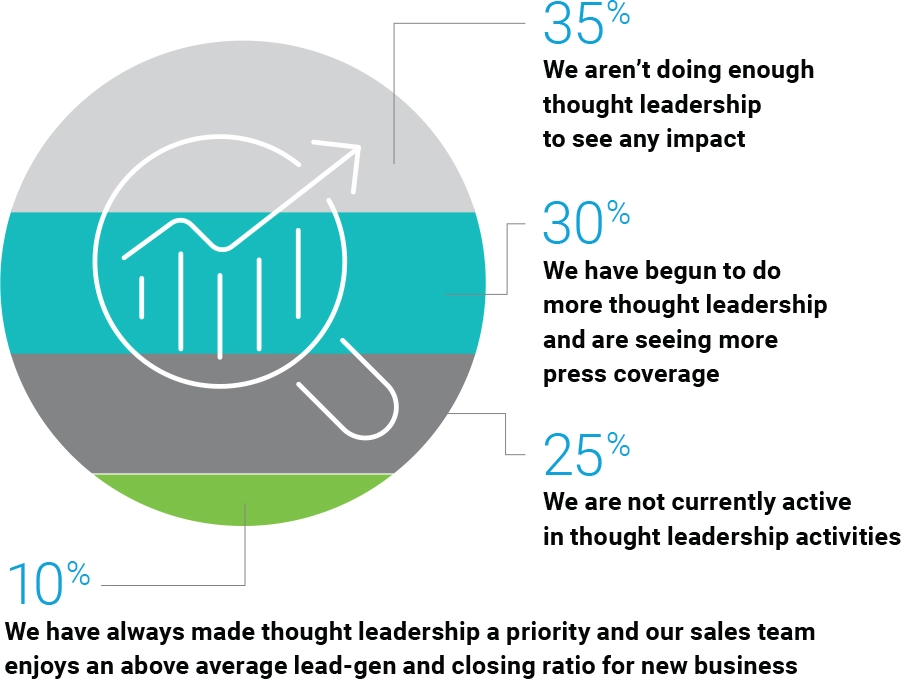
Merit Mile’s Approach and Commitment to Thought Leadership
Merit Mile’s team of PR experts are constantly identifying trends and headlines in the media to position clients as thought leaders in front of journalists, editors, analysts, industry media, and podcast producers. Sometimes this results in an interview and placement with a top-tier news outlet, and sometimes it catches the eye of a trade industry editor looking for an expert by-lined column for the next issue. The key is understanding how the client can react to trends or headlines making news and immediately reaching out to the media outlet for additional expert commentary. Here are a few examples of thought leadership article placements for Merit Mile clients recently.
